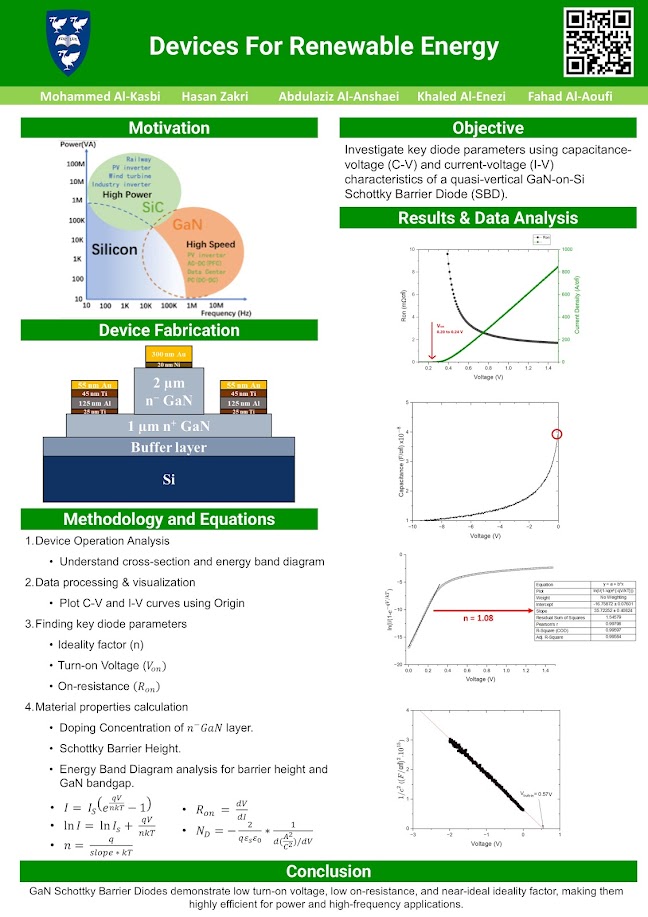Week 4 February 21, 2025 In our last week, we focused on refining our calculations and preparing for our final presentation. Seeing everything come together felt satisfying after weeks of effort. We calculated the effective density of states in the conduction band as 2.24 × 10¹⁸ cm ⁻ ³ , which matches theoretical expectations. We fine-tuned our Schottky barrier height calculation and arrived at 0.697 eV , confirming the efficiency of GaN SBDs for high-speed, low-power applications. Meanwhile, some of us worked on designing our poster to present our findings concisely. We aimed to make it visually engaging while clearly explaining our research. Balancing technical accuracy with simplicity for the audience was tricky, but we felt we struck the right balance by the end. The final few days were spent rehearsing our presentation and ensuring everyone was confident in explaining their sections. We were both excited and nervous, but overall, w...






